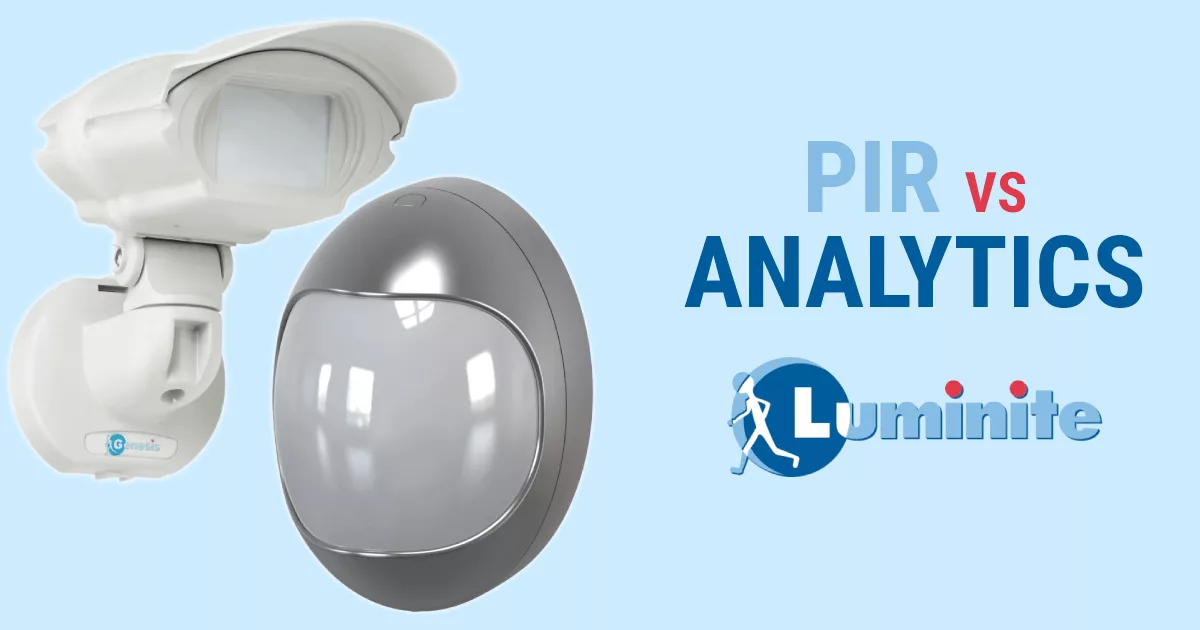With the advance of deep learning analytics in the industry is the death bell tolling for traditional PIR motion detectors?
Luminite has designed and manufactured a wide range of external PIRs – for over 30 years. In this time, the company has produced a range of wireless detectors with a transmission range that is unrivalled in the industry. With the advance of deep learning analytics in the industry, is the death bell tolling for traditional PIR motion detectors? A loaded question as therein lies the problem – what is a typical PIR? With so many variants including lens type, detection patterns hard-wired and wireless, it is very difficult to make a definitive comparison.
Perhaps the question shouldn’t be PIR versus Analytics. As the two can create a robust perimeter security solution when used together. Both technologies benefit the client: the medium to long-range sensor for the initial detection and the onboard analytics for verification. Therefore, PIRs give a layered approach to a perimeter security solution. If for any reason software is compromised, a site still has a functioning line of defence in their surveillance.
Delivering high detection with low false alarms
A well-positioned PIR working in conjunction with CCTV offers the best solution: with different systems trading off one another’s strengths to create a more powerful end solution, delivering high detection with low false alarms. False alarms are, of course, the main bug bear for any security installer. Law enforcement studies consistently report that over 90% of alarms resulting in a police response prove to be false. The research and development at Luminite place the installer at the centre of everything it does – what best solution can we offer given various constraints? These may be due to budget, power supply, environment – any number of factors.
What causes false alarm tiggers?
Sunlight is one of the main triggers for false alarms, meaning we can never fully eradicate false alarms. However, Genesis 2 detectors offer the best defence, with the optics coated in black indium to specifically guard against reflections from the sun.
Experienced installers want the ability to adjust settings for optimum detections. Genesis 2 detectors employ quad pyro sensors; and triggering body heat in each quadrant activates a detection. PIRs generally perform better against video analytics at night. This is due to their ability to accurately capture infrared wavelengths emitted by the human body, and distinguishing that from other visual ‘noise’. Whereas analytic detection is adversely affected by shadows and low-lit areas. Weather related false alarms can also prove to be a huge headache for CCTV operators and traditional PIRs generally perform very well in heavy rain and fog.
Using Analytics
‘Post-incident forensics’ are a major driver for using analytics. Security analytics tools can provide insights into where an intrusion/attack originated, a detailed timeline of the incident; as well as compromised resources. This ability to reconstruct and analyse an incident can improve organisational defences to guard against future potential breaches. However, these features are generally only found in top end model. Most standard video analytics are still pretty basic, analysing a two-dimensional screen and individual pixels.
Cost is a driving force
Cost, of course is a huge deciding factor. Whilst top end video analytics may perform better than traditional PIRs on some sites, cost is a driving force. Generally, the most cost-effective solution is PIRs alongside analytics. Using analytics software relies heavily on the installer’s expertise. If incorrectly configured, there is a serious danger that the software can ignore the activities and events that should be detected.
To conclude, of course analytics wins if the client requires advanced scrutiny of the movements on a site. However, for robust intrusion detection, analytics alongside traditional PIR technology offers an effective and cost saving combination.


